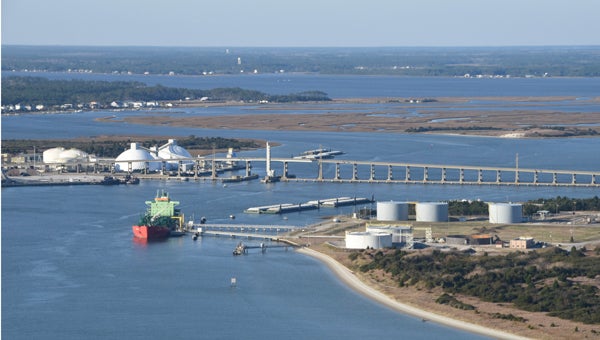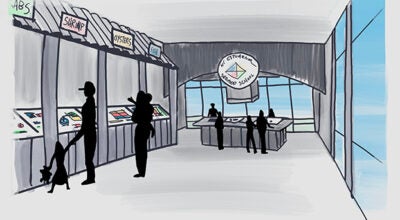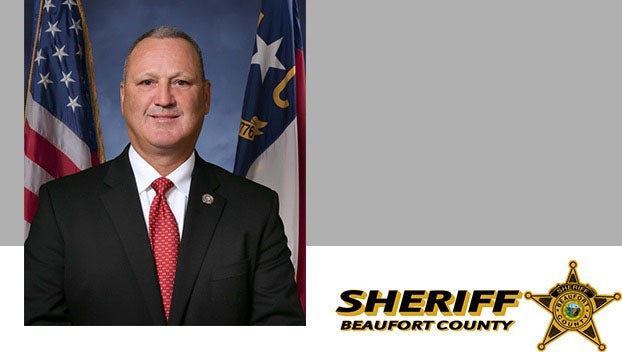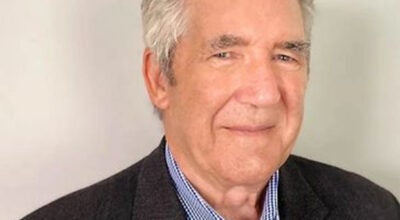HARD TO PORT: Ongoing dredging, shoaling issues cause PotashCorp losses
Published 10:53 pm Saturday, January 24, 2015

DYLAN RAY | CONTRIBUTED
A MATTER OF FUNDING: PotashCorp-Aurora’s ship, The Aurora, at the company’s dock at Port of Morehead City. Severe shoaling in the Beaufort Inlet has forced ships to lighten their loads, at a cost to the companies using the port.
PotashCorp-Aurora is losing $2 to $3 million a month, a siphoning of funds that has nothing to do with product demand. Instead, it’s caused by sand — specifically, excessive shoaling in the Beaufort Inlet channel that’s forcing ships to lighten their loads in order to enter the harbor.
Two issues define the situation: the Army Corps of Engineers’ dredging of the Beaufort Inlet channel to the state port area and its turning bays, and the North Carolina State Ports Authority dredging of the areas surrounding berths rented to shipping entities. The channel had for many years enjoyed a 45-foot depth, a draw for bigger ships, but that depth is decreasing rapidly, according to Ray McKeithan, manager of public affairs for PotashCorp. Right now draft restrictions are set at 34 feet at high tide, which means ships are carrying less material in order to make it through the channel. At the same time, the NCSPA is obliged to keep the water depth at PotashCorp’s piers at no less than 38 feet.
“Currently, the depth is approximately 28-feet, and as we can’t use our piers, our costs are increasing and there is no immediate relief in sight,” McKeithan said.
According to McKeithan, the state has not coordinated dredging with the USACE in four or five years, and while USACE did put the project out to bid recently, the shoaling is decreasing draft for the big ships by about a foot per month.
And that’s costing PotashCorp money on a large scale, exceeding the yearly $16 million-plus the company pays for its port activities. Through Morehead, PotashCorp imports molten sulfur, an essential input for phosphoric acid production — the feedstock of all the company’s products. From the port, PotashCorp ships liquid and solid phosphate fertilizers and merchant-grade acids to India, Brazil and other South American countries.
While the draft situation in the inlet and around the piers is costing PotashCorp, lack of action on the part of the NCSPA and USACE may ultimately lead to a higher cost: that of losing the stream of revenue from the port as big ships are forced to go elsewhere.
How the shoaling happened
Andrew Midgett has been with the Morehead City Pilots Association, guiding ships in and out of Beaufort Inlet, for decades. He remembers when the channel had the deep draft — 45 feet — that has disappeared over the last decade. The current shoaling problem, he said, is based on a combination of three factors: a lawsuit, the migration of Shackleford Banks and bad timing.
The situation started when, as determined by time, tide and many storms, Shackleford Banks migrated west, so its western point was nearly at the edge of the shipping channel. At the same time, Carteret County filed a civil action against the USACE: it was believed that the inlet dredging was causing Atlantic Beach erosion and the county wanted the Corps to use the sand dredged from the inlet to shore up neighboring beaches. The lawsuit was settled in 2008, with USACE agreeing to dump its dredged material at Atlantic Beach and Fort Macon. But the Corps decided not to do the full dredging, to let the sand build up, then use it to restore the beaches. But Shackleford Banks didn’t comply with the plan. Instead, it collapsed and dumped all that sand in the channel, Midgett said.
Since, the shoaling has increased and Morehead doesn’t have enough tonnage moving through the port to justify increased dredging by USACE.
Ships coming into and out of port need a minimum three-foot cushion between the hull and the channel bottom, and that’s non-negotiable, Midgett said, because it’s a matter of safety for pilots, crew and the actual ships.
“We cannot afford to have a ship touch the bottom. The Coast Guard would hang us from the yardarm if we did that,” Midgett said. “Then we’re opening ourselves up to all types of liability.”
Midgett said the situation has reached a critical point.
“We’re getting mighty close to a draft that’s just not carriable,” Midgett said. “There’s a danger that ships can’t get in here. Then what happens? We are very close to where the port could actually lose customers.”
Finding resolution
There are many stakeholders working to get the shoaling issue resolved, from Midgett on behalf of Morehead City Pilots Association and McKeithan representing the port’s oldest and biggest shipper in PotashCorp, to state legislators from the coastal region and U.S. Congressman Walter B. Jones.
USACE intended to award a contract for the channel and harbor dredging this month, with work starting in February. However, the bid deadline came and went on Thursday. The one bid submitted was over twice the $4 million the Corps had allotted for the entire project, thus not awardable.
Midgett believes the window is closing — pilots don’t have another 30 days to wait and see. He’s advocating for an emergency dredging.
“I think the Corps, in an emergency situation, should be able to work outside of their normal parameters,” Midgett said. “Somehow, somebody’s got to pull the trigger and say, ‘Send a dredge in there.’”
McKeithan said PotashCorp is counting on the NCSPA, NCDOT and USACE to develop a long-term solution and resolve the immediate issue. Ultimately at stake is the survival of one of only two ports in North Carolina (the other is Wilmington), as big shippers may start looking to other ports — ports in which deeper draft restrictions mean maximizing cargo, and profit.
“What’s the tipping point? We really don’t know the answer to that question. We’ll have to continue the process of light-loading vessels, but ultimately the call will be made by the Coast Guard, on whether conditions are safe for transit, and the harbor pilots, who aren’t going to guide vessels if there’s any threat of unsafe guidance,” McKeithan said. “There really needs to be more awareness of the urgency of the situation there and we fully expect the state’s Ports Authority to do its job. Funding shouldn’t matter at this point, because it’s a critical issue of safety and commerce and you really can’t place a dollar value on that.”





